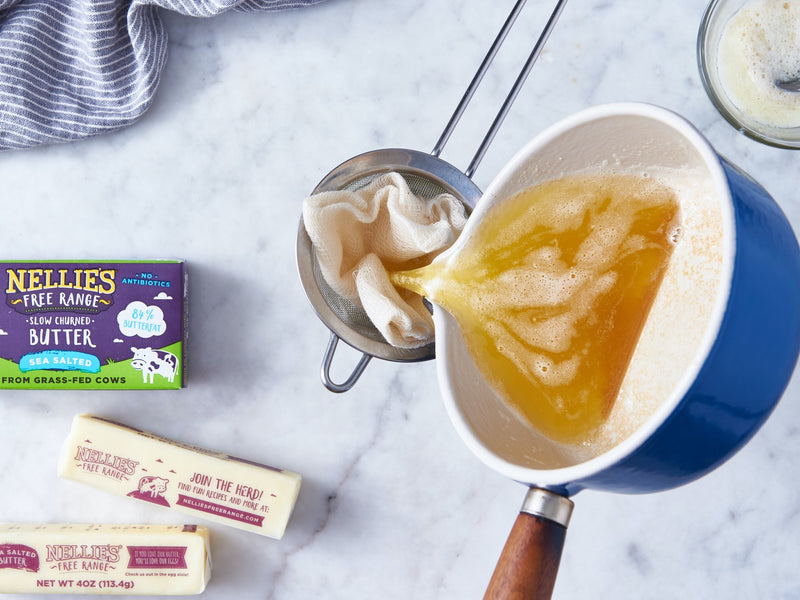
You'll think, 'Ghee, should've tried this sooner!'
You've probably seen it on the shelf of your local supermarket or unknowingly enjoyed some in the curry at your favorite Indian restaurant. So what is ghee, anyway? The answer is simple: ghee is butter with the water and milk solids removed; in other words, pure butterfat. The butter that you find at the grocery store is 80-86% butterfat (84% in our case), with water and milk solids making up the remaining 14-20%. The process of making ghee (which is a type of clarified butter) includes melting it, cooking off the water, then allowing the milk solids to separate from the butterfat. Although ghee can be purchased at the store, it often comes with a high price tag, which is all the more reason to make it right at home. Here's how:
Steps for making ghee at home
Unlike browning butter or frying an egg with crispy edges, making ghee is a "low and slow" cooking process. It takes a little bit of patience, but its higher smoke point, slighty nutty flavor, and overall versatility make the final product well worth the wait.
Supplies:
- Butter (we recommend using at least 1 lb per batch of ghee), cut into tablespoons
- A heavy-bottomed pot small enough for your butter to be at least 1" deep when melted
- A heatproof container
- A strainer
- A paper coffee filter, cheesecloth, or nut milk bag
- A spoon
Instructions:
- Melt butter in small heavy-bottomed pot over the lowest possible heat without stirring (this allows the milk solids to start settling out).
- Once melted, let butter cook until 3 distinct layers form: white milk solids on the bottom, clear butterfat in the middle, and foam on top. You may notice some bubbling as the water in the butter cooks off. If any vigorous bubbling occurs, make sure your heat is turned down all the way or move to a smaller burner.
- As butter cooks, use a spoon to gently skim the foam off the surface a few times throughout the cooking process, taking care not to disturb the liquid or solids that have settled below.
- Once any bubbling has mostly ceased and you've skimmed off as much surface foam as possible, continue cooking until the milk solids at the bottom of the pot begin to brown slightly.
- Strain mixture through a coffee filter set in a strainer (alternatively, line a strainer with cheesecloth or a nut milk bag). Try to leave as many milk solids as possible in the bottom of the pan while you pour off the clarified liquid.
- Transfer ghee to a heatproof container, let cool to room temperature, and use in your favorite recipe or refrigerate for up to 3 months.
Benefits of ghee
Along with being a great option for those who are sensitive to lactose, ghee comes with countless benefits. Clarifying butter removes the milk proteins, which are responsible for butter's notoriously low smoke point. With a smoke point of about 482F, ghee (and any type of clarified butter) can be safely used for sautéing, frying eggs, searing meats like steak and pork chops, and much more. Thanks to its extremely low water content, ghee is also considered shelf stable and has a much longer shelf life than butter. However, with the clarification process comes some volume loss. If you're making a batch of ghee specifically for a recipe, keep in mind that you'll lose about 25% in volume when you clarify your butter.
How to store ghee
Like regular butter, ghee should always be covered so that it doesn't take on any flavor from other ingredients in your fridge. A lidded glass jar will do the trick. Although ghee can be stored on your counter, it will last much longer in the refrigerator—up to 3 months.









